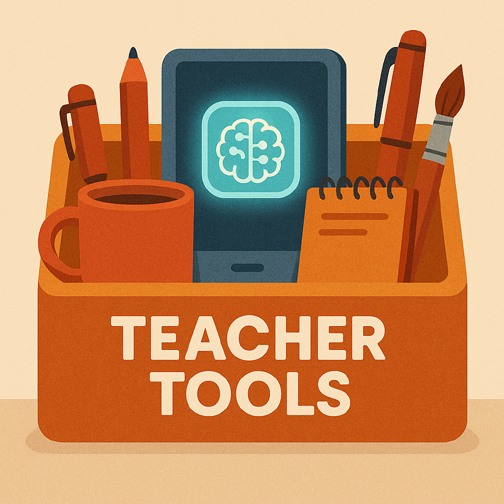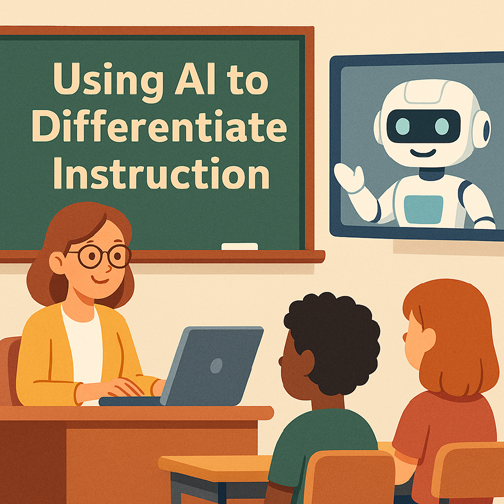
Sign-Up to Receive the Latest Updates
Not ready to register a free account yet, but still want to keep up with Stossel in the Classroom? Sign up for our Ideas in Action Newsletter!
Every teacher has been there: one class period, 25 students, and what feels like 25 different ability levels. Some students breeze through the content, others need extra support, and a few are somewhere in the middle: bored, confused, or disengaged.
Differentiation is essential. But it’s also one of the hardest things to do consistently. It takes time, creativity, and energy. I don’t know about you, but for me, those things are often in short supply.
Enter AI. (If the kids are using it, and we both know they are, so can you!)

With the help of tools like ChatGPT, teachers can now differentiate reading materials, assignments, and classroom activities faster and more efficiently. It doesn’t replace your expertise, it enhances it. And it gives you a practical way to meet your students where they are, even when they’re miles apart academically.
What Differentiation with AI Looks Like
Let’s say you’re using a Stossel in the Classroom video in your lesson plan. You download the teacher guide, and you like the discussion questions, but you know that some of your students need simplified language, while others would thrive with a more advanced extension.
Instead of rewriting everything yourself, you can upload the guide to an AI tool and ask it to create:
- A version of the questions rewritten at a lower reading level
- A shortened or simplified version of the vocabulary list for ELL students (or even translate it into another language!)
- An extension activity for students who finish early
- A guided worksheet version of the open-ended questions
And that’s just the beginning! You can do this with almost any educational material: textbook passages, article summaries, reading assignments, even test prep handouts. (NOTE: Make sure you are not violating any rules/regulations with what you upload to an AI.)
How to Get Started
You don’t need to be a tech wizard. You just need a clear idea of what you want. Here’s a simple step-by-step for using AI to differentiate:
- Choose your content. Start with something you already use, like a SITC teacher guide or a short article.
- Copy and paste the material into an AI tool like ChatGPT or Claude. You can also use AI tools in Google Docs with add-ons.
- Use specific prompts. The more clearly you ask, the better the results. (You know how to do that! It’s what you do all day long!) Garbage in, garbage out applies.
Review and edit. AI is a time-saver, not a final draft machine. (Despite what your students may think!) Tweak the output to match your teaching voice.

Sample Prompts for SITC Materials
Here are some examples of prompts you can use with any SITC Teacher Guide.
For students who need support:
- Simplify these discussion questions to a 5th grade reading level.
- Rewrite this vocabulary list using simple words and examples that a 6th grader or English language learner could understand.
- Turn these questions into a multiple-choice worksheet.
For students ready to go deeper:
- Create an extension activity based on this video that includes independent research.
- Add a debate component for gifted learners using this topic.
- Design a creative project option that builds on this video’s theme.
For mixed-ability classrooms:
- Create three tiers of the same assignment: one for developing readers, one for on-level students, and one for advanced students.
Why It Matters
Differentiation isn’t just a buzzword. It’s what helps students feel seen, capable, and challenged at the same time. With AI, you don’t have to start from scratch or stay up late making three versions of every assignment.
You can adapt high-quality materials, like those from Stossel in the Classroom, to better fit your unique class. Your unique student. Whatever you teach, whatever the composition of your classroom, AI gives you the power to personalize without the burnout.
A Final Word of Caution (and Encouragement)
AI is a tool, not a teacher. It can make suggestions, but it doesn’t know your students. That’s where you come in.
Use your judgment. Adjust the tone. Keep what works, toss what doesn’t. And don’t be afraid to experiment.
This summer, spend just a little time playing around with AI tools. Try uploading a SITC guide, reworking a lesson you already use, or building a new version of a classic assignment.
You might just find that differentiation becomes less of a burden—and more of a breakthrough.

